Car amplifiers FAQ
Answers to amp questions

Kenwood Excelon XR901-5 five-channel amplifier — 60 watts RMS x 4 + 600 watts RMS x 1
Installation
» Why do I need to add an additional fuse at the battery? And how big a fuse do I need?
» Do I need a separate fuse block too?
» What wiring do I need to hook up my amplifier? Does any of it come with the amp?
» What size power and ground wires do I need for my amplifier?
» What's this thin blue wire for?
» How much air space do I need around my amplifier?
» How do I hook up multiple amplifiers?
» My amplifier is hooked up, but it won't turn on. What's wrong?
Power
» How much power do I need to get optimum performance from my car's sound system?
» What's the biggest amp I can hook up to my car's electrical system?
» Where should I ground my amp?
» What is a "high-current" amplifier?
» How much power do I need for my subwoofers?
Speakers
» What should I know about my speakers' impedance?
» How can I drive a pair of speakers and a subwoofer with a single car audio amplifier?
» My new car amplifier is "2-ohm stable." How can I take advantage of that?
General
» What's the story on the different amplifier "classes"?
» What's the difference between "parallel" and "series" wiring?
» When should I use a mono amplifier instead of a multichannel amplifier?
» What are the benefits of hooking up 2 subwoofers to a mono amplifier? How would I wire them?
» What is "bridging" an amplifier?
» Are there any problems in bridging an amp?
» Can I bridge my mono amplifier?
» I'd like to add a power amplifier to my factory-installed car radio. What are my options?
» How do I fine-tune my amplifier's gain and bass boost settings?

Rockford Fosgate Power T400X2ad 2-channel amp — 200 watts RMS x 2
Q: Where can I mount my amp?
A: Since space is at a premium in most vehicles, it's important to find just the right spot to mount your amp. An amplifier needs some open air space around it to dissipate the heat that builds up as it works, otherwise it will overheat and shut down. Keeping that in mind, our two favorite locations are under a seat or in the trunk. Under-seat mounting is space-efficient and keeps the amp hidden from view. It also lets you run shorter cables from your receiver. A trunk-mounted amp requires longer power and signal cables, but is safely hidden and closer to rear speakers and your subwoofer.
Warning: removing your seat could deactivate your vehicle's SRS system.
Q: My car audio amplifiers all came with fuses. Why do I need to add an additional fuse at the battery? And how big a fuse do I need?
A: The answers to most questions about fuses include the word "safety." While most car audio amplifiers do come with their own fuses, these fuses are designed to protect only the amps themselves. You need to install a fuse at the battery to protect the power wiring, your car, and yourself against fire, in the event of a short circuit. The next two answers cover this in greater detail.
Q: Why fuse at the battery?
A: In the event of an electrical mishap, you do not want a live wire stretching throughout your vehicle. Installing a fuse of the proper amperage on your power cable protects your car and gear from the dangers of a short circuit. A short circuit occurs when a positive current-bearing wire makes contact with bare metal (like your car chassis). Because your entire car chassis can be considered "negative" or ground, you can think of a short circuit as positive touching negative. You definitely don't want this to happen, but if it does, a properly installed fuse will prevent a fire or other damage.
A fuse does its work by "blowing" and stopping the flow of current. A fuse is a lot easier and cheaper to replace than your car or your life. So, given the alternatives, "blowing a fuse" is a relatively good thing. You can optimize the protection your fuse provides by installing it as close to the battery as possible — that increases the length of the protected cable behind it. Eighteen inches from the battery is the maximum distance we recommend.
[Learn more in our Power Wire Fusing article.]
Q: How big should the fuse be?
A: If you're installing just one amplifier, the fuse at the battery should simply match or slightly exceed the fuse rating of the amplifier itself. Some amps don't come with onboard fuses — you have to find their fuse ratings in their owner's manuals. If you're installing two or more amplifiers, just add their fuse ratings together and install a fuse rated roughly equal to this sum. Generally, it's better to go slightly higher than lower, but a margin of five amperes is acceptable.
Say you have three amplifiers, two with fuse ratings of 20 amps each and one with a fuse rating of 25 amps. In this case, you can safely go with either a 60 or 70 amp fuse. Of course, if your system is powerful enough to demand that you install a heavy duty fuse, it's important that your power and ground wire be of an appropriately heavy gauge as well.
Q: Do I need a separate fuse block too?
A: A safe system will have the right fuses installed at each amplifier and also on the power cable by the battery. But if you've ever taken a peek at some multi-amp competition-style car audio systems, you may have noticed fuses at a third location — in a fuse block by the amps. Sure this hardware looks good, but is it necessary?
If your amplifiers have on-board fuses, you don't need another set. But if your amplifiers don't each have their own fuses, you definitely do need to fuse each amp's power line near the amp. Often this is done with a fused distribution block, so each amp gets its power line fused as it's split off from the main power cable. This makes it so that if one amp suffers a catastrophic short circuit, for instance, the damage will not spread to the other amps or your main power cable.
Q: What wiring do I need to hook up my amplifier? Does any of it come with the amp?
A: Amplifiers generally do not include the wiring necessary to hook them up. However, we offer a number of amp wiring kits that can provide everything you need to send signal and power to your amp.
You need a thick power cable to run from your car battery's positive terminal, through the car's firewall, all the way to the amplifier. The required thickness (gauge) of the power wire is determined by the amp's manufacturer — you can look it up in the owner's manual or online. Be sure to install an in-line fuse or circuit breaker near the battery. Without one, an accidental short circuit could pose a fire hazard and damage your amp (not to mention your car).
You also need another length of the same gauge cable to serve as your ground wire. You won't need as long a ground wire because your grounding point should be close to the amplifier. The point on your car's chassis where you bolt the ground wire should be cleaned and scraped paint-free to ensure a tight electrical connection.
The last wire you need for powering the amp is a turn-on lead. It doesn't need to be as thick as the power and ground wires (18 gauge should be fine). It runs from the remote turn-on lead at the back of your receiver to the remote terminal on the amp. In the case of a factory system with no remote connection, you can tie into a switched 12-volt source, one that only comes on with the car, in the fuse box.
The audio signal travels from the back of your receiver to your amplifier through an RCA patch cable. Your patch cable should be long enough to reach the amp but not so long that it has a lot of slack and could become kinked over time. If you're using a factory receiver without RCA outputs, you can get your amp's input signal from the factory speaker wiring, either behind the radio or from the rear speaker leads. Many amplifiers have high- or speaker-level inputs to accommodate this kind of setup. Otherwise, you can use a line output converter to convert the speaker-level signal down to the preamp/RCA level your amp's input needs.
At the other end of the amp, you'll need speaker wire. Generally 12, 14, or 16 gauge wire should be sufficient. Keep in mind that current flows more easily through thicker wire. (The lower the gauge number, the thicker the wire.)
Q: What size power and ground wires do I need for my amplifier?
A: Your car amplifier will draw a lot of current from your vehicle's electrical system, and therefore will need thick enough power wiring to ensure that the current flows freely, without resistance. This is important — otherwise, your amp can over-work, under-perform, or even overheat and shut down. For a single amplifier install, the required wire size has been specified by the amp's manufacturer and can be found in the owner's manual or online.
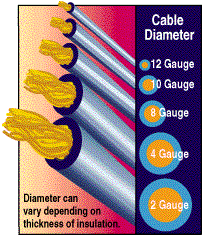
Using thicker power and ground cables will allow your amplifier to draw the juice it needs from the battery more easily.
If you don't have the manual, or plan a multi-amp system, you should check out our Cable Gauge Chart to determine the proper gauge of wiring to use. You will be asked to supply the total RMS wattage of your system, as well as the estimated length of your intended power cable. By figuring in a typical amp's efficiency and the normal voltage of a running car, you'll find out the maximum current the amp will draw from the electrical system and exactly which size wire you'll need so it will all work properly.
Q: What's this thin blue wire for?
A: The thin blue wire is called the turn-on lead, as it carries a signal that turns on your amplifier. The turn-on lead runs between the amp and your receiver. You wouldn't want your amp to be on all the time, draining your battery dead every time you park. The turn-on signal triggers an electronic switch inside the amp that powers it on whenever the receiver turns on. The turn-on lead must be connected properly in order for your amp to power up.
Q: How much air space do I need around my amplifier?
A: An amplifier produces heat, which its heat sink absorbs and dissipates. You should leave a few inches of air space around each side of the amp so that it stays as cool as possible. When mounting an amp on a side wall (vertically), make sure that the fins on the heat sink are also running vertically so the heat escapes more easily. Don't mount an amp upside down — the amp will not be able to dissipate heat effectively, and overheating can damage or destroy your amp.
Q: How do I hook up multiple amplifiers?
A: You must supply power from your battery to every amplifier in your system. You could run a separate power wire to each amplifier, but a power distribution block will give you a cleaner installation with less potential for noise problems.
Let's say that you want to install a 200-watt mono subwoofer amp, a 75W x 4 amp for your door and rear deck speakers, and a 30W x 2 amp for your dash speakers — 560 watts of total system power. Run a single 4-gauge power wire from your battery to a 3-way (or 4-way) distribution block next to your amps. From the block, 8-gauge cables supply power to your subwoofer and multi-channel amplifiers, while a 10-gauge wire feeds the 30 x 2.
Ground your amplifiers in reverse fashion — one 10-gauge and two 8-gauge ground cables run from the three amplifiers to a 3-way grounding block. Then, a 4-gauge ground cable connects the grounding block to your vehicle's chassis.
In multi-amp systems, the remote turn-on output of the receiver could become overwhelmed and fail. In that situation, you'll need a relay on the turn-on lead that gets triggered by the receiver but gets the 12-voly turn-on signal from somewhere else, like the fuse box.
Normally you use RCA patch cables to send the signal from your receiver to your amplifiers. A receiver with 3 sets of preamp outputs can provide signal for your front, rear, and subwoofer amps. If your receiver has only one set of preamp outputs, you'll have to use Y-adapters to provide signal to a multi-amp set, or use amps with built-in preamp outputs that allow you to daisy chain the signal from one amp to the next.

Alpine KTA-450 4-channel power pack amplifier — 50 watts RMS x 4
Q: My amplifier is hooked up, but it won't turn on. What's wrong?
Check (and repair if necessary) the following:
- Do all the other electrical systems in the car work?
- Is the receiver turned on?
- Are the on-board fuses in the amp good?
- Is the in-line fuse on the power cable near the battery good?
- Is the power cable from the car battery to the amp firmly connected at both ends?
- Is the ground cable from your amp firmly connected to the car's metal chassis with no paint or varnish interfering with a clean electrical contact?
- Is the turn-on lead (usually blue) to the amp from the receiver properly connected? (Set the receiver to the tuner or radio mode. If your amp now comes on, it means the turn-on lead was wired to the receiver's power antenna lead by mistake and needs to be correctly re-wired to the remote turn-on lead connection.)
- If this is a multi-amp system, have you tried powering up just one amp at a time? (The turn-on signal has a limited capacity. In multi-amp systems it is often necessary to use the turn-on signal from the receiver to power a relay, which in turn supplies the turn-on signal to the amps from another power source.)
If the answer to all those questions was yes and your amp still doesn't come on, then perform the following test:
- Remove the in-line fuse on the power cable.
- Disconnect the turn-on lead from the amp and tape the end so it can't contact any metal.
- Take a short length of wire and connect it between the amp's remote turn-on terminal and its positive power terminal, leaving the power cable connected to the amp.
- Replace the power fuse.
- If the amp now comes on, the turn-on lead wire, or the signal itself, from the receiver is bad and should be repaired. Replacing the turn-on lead usually fixes this. Otherwise you'll need to provide that signal (+12 volts DC) from somewhere else, like the car's fuse box which only gets powered when the ignition's on. You do not want to leave the turn-on lead jumped to the amp's positive terminal because that way the amp will never shut off, draining your car's battery dead.
- If the amp did not turn on, you most likely have a damaged amp and need to replace it or contact your dealer to arrange for its repair.
- One last check, if you have and know how to use a voltmeter, while that remote jumper wire is still attached, measure the voltage at the amplifier's power terminal and remote turn-on terminal. If it reads about +12 volts DC or more each, then your wiring is good but your amp is bad. If you don't get the right voltage at the amp, then you know to keep looking for a wiring problem.
Important Note: For your personal safety, and that of your equipment, always remember to remove the power fuse before disconnecting or reconnecting your amplifier.
Q: How much power do I need to get optimum performance from my car's sound system?
A: Since every car stereo is different, there's no magic "wattage formula." As long as you stay within the recommended power range of your speakers, increasing power will always add richness and depth to your music. Compare a spinet piano to a concert grand. The small piano is good enough to play music clearly, but move up to a grand and you'll gain better tone, greater harmonic detail, and more volume. The larger instrument is simply more powerful.
Here are a few things to consider, though:
- How efficient are your speakers? Your speakers themselves have a direct influence on the overall "power" of your system. If you plan to power your speakers with your in-dash receiver, efficient speakers (sensitivity of 90 dB or higher) will give you more bang for the buck. Installing high-performance component speakers? An outboard amp will generate maximum performance.
- Are you adding a subwoofer? Subs need substantial amounts of power to reproduce bass, so it's absolutely essential to use an outboard amplifier with them. You should count on using more power for bass than you use to power all your full-range speakers. Most factory receivers can put out about 10 watts per channel, so a sub amp of from 50 to 100 watts RMS will keep up nicely. If your aftermarket receiver puts out 20 watts RMS x 4 channels (80 watts total), send at least 200 watts to your sub. Using a 50 watt x 4 amp to drive your components? Dedicate about 250 to 500 watts for bass.
- How good is your wiring? Your system's chain of components is only as strong as its weakest link, so don't cheat your amps and speakers with substandard power cable and speaker wire.
- Before you buy, consider your car. If you drive a quiet car with the windows up, you'll need much less power than someone who offroads in a Wrangler. Speaker location, extraneous road/car noise, noise damping material, and personal taste are factors that may affect how much power you'll need in your system.
Q: What's the biggest amp I can hook up to my car's electrical system?
A: Your car's alternator ampere rating determines how powerful an amplifier you can install. Multiply the ampere rating by 40%, and you'll get a rough idea of how much reserve current capacity your car's system has. Next, you'll need to calculate the approximate current draw of the amplifier you're considering installing.
To calculate the current draw of an amplifier, multiply the number of channels by the RMS watts per channel (a 2 channel amp rated at 300 watts RMS per channel would be 600 watts). Double it to account for amplifier inefficiency (600 watts X 2 = 1200 watts), then divide by the average output Voltage of an alternator, 13.8 volts (1200 divided by 13.8 = 87 amps). Since the average music signal requires about 1/3rd of the average power in a test tone, divide by 3 (87 amps divided by 3 = 29 amps). The result is the amplifier's approximate average current draw while playing music at top volume.
A fast-and-nasty way to ballpark an amplifier's current draw is to divide the total fuse value of the amp by two. For amplifiers with multiple fuses, the rating of all fuses provided with the amp must be added together. This will likely produce a significantly higher estimate than using the proper formula. Although inaccurate, this will err on the side of safety.
Finally, compare the amplifier's approximate current draw to your vehicle's reserve current capacity to determine if the electrical system can support the amplifier.
If all those numbers are a bit much, here's a simpler way to think about it: an alternator capable of producing 65 amperes is usually adequate for systems up to 540 watts RMS. A compact car with a 35-amp alternator can accommodate around 290 watts of power, while a Sport Utility with a 145-amp alternator should handle a 1200 watt system. A capacitor can help if your system is drawing a little too much power. Car audio competitors often replace their vehicle's alternators with heavy-duty upgrades to accommodate big power demands.
Q: Where should I ground my amp?
A: Your ground wire should be of the same gauge as your power wire and must make direct contact with the metallic body of the car. Look for an existing bolt or screw that makes contact with the car chassis or frame near the amp. Remove the bolt or screw, and scrape away any paint or grime.
A star washer will help your ground wire maintain solid contact with the car body. Use a ring terminal on the end of the ground wire, to keep it securely fastened to the bolt or screw. If you can't find a convenient ground screw or bolt, drill a hole for one. Be careful not to drill into the gas tank, a gas line, or a brake line. If you're grounding multiple components, try to ground them all to a single bolt,
Q: What is a "high-current" amplifier?
A: An amplifier is considered a "high-current" amp if it can handle low impedance loads — less than 2 ohms per channel, less than 4 ohms when bridged — without overheating or shutting down. In a perfect world with a perfect amplifier, power output would double every time the impedance was halved. For example, an amplifier rated at 50 watts RMS x 2 channels into 4 ohms would produce 100 watts by 2 into 2 ohms. Unfortunately, this is not a perfect world, and most amplifiers can't do that.
The best way to identify a high-current amplifier is to look at what happens to the power rating as the impedance drops. The closer it comes to achieving the perfect world scenario above, the more current it is capable of passing.

Kicker CXA800.1T mono subwoofer amp — 800 watts RMS x 1 at ohm
Q: How much power do I need for my subwoofers?
A: That depends on what sort of bass impact you hope to achieve. If you just want to hear a bit more bass than your regular stereo speakers can put out, you can get what you need with an efficient 6-1/2" subwoofer driven by as little as 50 watts RMS. But when you're looking for really big bass, you'll need at least a 10" or 12" subwoofer and a minimum of 150 to 200 watts to drive it. Low bass notes are power hungry, and the more wattage you feed them, the better they sound. In general, the larger your subwoofer and the harder you want it to hit, the more power you'll need.
Here's a good rule-of-thumb guide to sub power:
- If you're using your car's factory stereo — 50 to 200 watts RMS of power for the bass will do nicely.
- An aftermarket receiver — you might want 200 to 300 watts RMS of power for your sub.
- Amplified speakers with around 50 watts RMS per channel — plan on 250 to 500 watts RMS for bass
- A 100 watts RMS or higher per channel system — you'll want at least 1,000 watts RMS for your sub.
We usually recommend that you drive your speakers/subwoofers with at least 75% of their total maximum RMS (not peak) rating to get them to perform at their optimum. The closer to 100% you power them, the harder they hit and the better they sound.
Q: What should I know about my speakers' impedance?
A: Impedance is the electrical resistance of a speaker or sub's voice coil to the voltage put out by an amplifier. Unlike the fixed resistance value of a resistor, a coil's impedance varies with the frequency of the signal. The "nominal" impedance rating of a particular speaker or sub is the value the manufacturer has asigned to it for the useful calculation and application of power. That impedance represents the load the amplifier has to work against to produce sound. The lower the load on the amp, the more power it can put out.
Unfortunately, there are limits to how low a speaker's impedance can be before the amplifier tries to put out more power than it can, over-stresses, and probably shuts down. The minimun impedance most car amplifiers are stable for (can handle) is a 2-ohm load on each channel or a 4-ohm load on bridged channels.
Almost all full-range car speakers have 4 ohms of impedance. Subwoofers come in a variety of impedances and even the number of voice coils. This is so you can combine multiple subs together, in various configurations, and achieve a total impedance that your amplifier can handle.
When speakers or subwoofer voice coils are wired in series — one after the other, a plus of one to a minus of another — you add their impedances to get the total impedance. Two 4-ohm voice coils in series make an 8-ohm load. When you wire speakers or sub coils in parallel — each terminal connected to the same pole, plus to plus, minus to minus — you take the impedance value of one coil and divide it by the number of coils. Two 4-ohm speakers wired in parallel make a 2-ohm load.
See Wiring Subwoofers — What's all this about Ohms? for more about impedance-matching. You should also keep in mind that when two speakers are wired together, whether in series or parallel, they share the power given them evenly, one-half of the total to each.
Q: How can I drive a pair of speakers and a subwoofer with a single car audio amplifier?
A: One way is to get a 3-channel amplifier, with two channels for your front speakers and a dedicated single channel with more power for your sub. But this leaves no room for future expansion. A key to getting the most out of your audio investment is choosing gear that will go to work for you now, and won't become obsolete as your system grows. Most car audio amplifiers boast a design flexible enough to keep them in the game as your set-up expands.
If you go with a 4-channel amplifier, powering a pair of front speakers and a subwoofer is a breeze. You'll simply want to run your amp in what we call 3-channel mode. To do this, bridge the rear channels to power your subwoofer, while the front channels drive the pair of regular stereo speakers. Bridging the rear channels means combining them in mono mode to create a single channel. Choose an amp that lets you engage a built-in, low-pass filter on this bridged channel. The crossover, along with the increased output from the mono channel, makes this an ideal way to power your sub.
As your system grows, you may dedicate a separate amplifier to your sub. At that time, you could add another pair of stereo speakers for rear fill, and run your 4-channel amp in 4-channel mode.
There used to be a way to utilize a 2-channel amp to drive two speakers and a sub that was called the "Tri-Way mode." This method used a special "Tri-Way" crossover connected to the two channels of the amp that created a third, subwoofer channel. If your 2-channel amp is Tri-Way capable, a Tri-Way crossover setup may be just the affordable solution for your system's upgrade.
Q: My new car amplifier is "2-ohm stable." How can I take advantage of that?
A: Amps usually put out more power to a 2-ohm load than to a 4-ohm load (most speakers). Amplifiers advertised as 2-ohm stable can safely drive a 2-ohm speaker or sub on each of its channels. One way to take advantage of this is to wire two 4-ohm speakers together in parallel, making a 2-ohm load, to each channel of your amplifier. You'll get twice the number of speakers and, usually, twice the amount of total power.
"2-ohm stable" does not mean the amp can drive a 2-ohm load with bridged channels — in fact it means it can't. An amplifier would need to be "1-ohm stable" in order to safely drive a 2-ohm load with bridged channels.
Q: What's the story on the different amplifier "classes"?
A: Amplifiers are divided into different classes defined by how their internal circuitry works. In the car audio world, most amplifiers are either Class AB or Class D.
Class A amps always have current flowing through their output transistors (or tubes). This is an extremely inefficient method of raising power and Class A amps are large, heavy, and run very hot. The upside of Class A operation is its linearity — Class A amps produce the cleanest output with the best fidelity and least distortion of any other class of amplifier.
Class B amps operate with each of their output transistors having current flowing through them only half the time, switching off when the signal's not there. Class B amplifiers are very efficient, but distort the signal due to all the on/off switching at the output.
Class AB is the traditional amp design used in car audio and home theater and stereo receivers. The output transistors power-down a little when not in use, resulting in good sound fidelity and adequate efficiency (often 50%).
Class D amps operate by rapidly switching their transistors on and off, which greatly increases amp efficiency, sometimes reaching as high as 90%. In effect, a Class D amp takes the input signal and maps it onto pulses of high current generated by the power supply. This creates a bit of high frequency distortion, above hearing range, that is easily removed with a low-pass filter at the output. Class D amps can be very small for their power ratings, and that's why they're showing up more and more in the mobile audio world where space is at a premium.
For more details, check out our article: Which amplifier class is best?
Q: What's the difference between "parallel" and "series" wiring?
A: When you wire a pair of speakers in parallel to an amplifier, you connect the positive (+) leads of both speakers to the amp's positive (+) terminal and the negative (-) leads of both speakers to the amp's negative (-) terminal.
If you parallel wire two 4-ohm speakers, the amp sees a 2-ohm load. This lower ohm load (lower resistance) allows the amp to put out more power but run hotter. Amps that can handle this additional heat build-up are considered 2-ohm stable.
Series wiring works the same way as flashlight batteries; the positive end of one speaker is connected to the negative end of the other speaker. Wire from the positive terminal of the amplifier to the positive terminal of one speaker. Then wire from the negative terminal of the first speaker to the positive terminal of the second speaker. Finally, run a wire from the negative terminal of the second speaker to the negative terminal of the amplifier.
If you series-wire two 4-ohm speakers, the amp will see an 8-ohm load. This higher ohm load (higher resistance) inhibits the flow of current out of the amp. You get less power, but the amp runs cooler and is more stable.
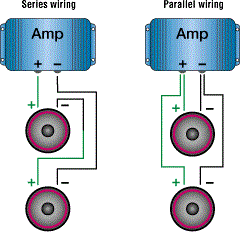
You can run more than one speaker from a single amp channel by wiring the speakers in series or in parallel. Series wiring will raise the load (resistance) that your amp sees, and parallel wiring will lower it. Be certain your amp is 2-ohm stable before wiring speakers in parallel.
Q: When should I use a mono amplifier instead of a multichannel amplifier?
A: Mono, 1-channel amplifiers are for subwoofers. They're designed to work with a wide range of impedances, and have tone controls and filters specifically made to help reproduce bass. Because mono amps tend to be Class D amplifiers, they are a good choice for powering subwoofers — Class D amplifiers have a high power-to-heat ratio and excellent efficiency, which are exactly what you want when dealing with power-hungry low frequency signals.
Most mono amplifiers are designed to run at 2 ohms, though some are even 1-ohm stable. Multichannel amplifiers, on the other hand, are typically designed to work with 2-ohm loads on individual channels but must see a minimum of 4 ohms when bridged. This is an important difference when using your amp to power multiple subwoofers, because you won't be able to bridge your multichannel, 4-ohm stable amp to power multiple subs that present less than a 4-ohm load. Instead, use a mono amplifier to power a 2-ohm load — two 4-ohm subwoofers, or two 2-ohm dual voice coil subwoofers, for example. You'll be able to push your subwoofers with the mono amp's maximum power, without running at a dangerouly low impedance.
Q: What are the benefits of hooking up 2 subwoofers to a mono amplifier? How would I wire them?
A: The benefits of hooking up two subs to a mono amplifier are the same as hooking up any other number of subs to a mono amp: you can push the subs with more power at lower impedances. Because lower frequencies are less directional (i.e. it's more difficult for your ears to determine where low frequencies come from than highs), bass is often transmitted in mono. Mono here refers to a single channel (as opposed to stereo, or two channels), not one speaker.
Most mono amps have two sets of speaker terminals for convenience of installation: if you are hooking up two subs to the amp and using large-gauge wire, it gives you a place to attach the wires without having to trim them, appearing as if each subwoofer gets its own terminal. But in reality, these terminals are actually tied together inside the amp — both positives are going to the same place inside the amp, as are both negatives. If you are using more than two subs, then you simply use parallel or series wiring (or a combination) to get as close to the minimum impedance of the amp as possible (see our subwoofer wiring diagrams for more information).
Q: What is "bridging" an amplifier?
A: : Bridging combines two of an amplifier's channels into one channel, in order to get more power. For example, a 2-channel amp that puts out 75 watts RMS per channel at 4 ohms may be able to put out as much as 200 watts RMS at 4 ohms into one channel when bridged, which could be great for running a subwoofer. Another example might be using a 4-channel amp to drive your left and right speakers with two of its channels, while driving a sub with its other two channels bridged together, saving you the need to buy a separate sub amp.
There are no formulas for determining how much power you gain when you bridge an amp's channels — every amp is different. Most 2- and 4-channel amplifiers have the capability of being bridged so they can conveniently be used in a variety of situations and systems. For more information, see our article, "How to bridge a car amplifier."
Q: Are there any problems in bridging an amp?
A: A disadvantage in bridging amplifiers is that you must be careful not to hook up too low of an impedance load, or you could damage the amp. Amps that work with loads as low as 2 ohms per channel usually can safely drive loads only as low as 4 ohms when bridged. The danger in driving an amplifier with an impedance load that's too low is that the amp could overheat and burn out. You should always check the bridged minimum impedance specification before connecting a bridged amplifier to a low impedance sub or speaker system.
Q: Can I bridge my mono amplifier?
A: No, you cannot bridge a mono amp because there is nothing to "bridge." Bridging means combining two amp channels together into one, in order to get more power. If you only have one channel, there's nothing to combine it with.
Q: I'd like to add an amplifier to my car's factory radio. What are my options?
A: In addition to running power, ground, and a remote turn-on lead, your amp hook-up requires input signals. Your factory radio won't have RCA outputs to connect to your amp's inputs, so you'll get the signals from your vehicle's factory speaker wires. You'll want to get an amplifier that has high- or speaker-level input capability. But if you already have an amp and it doesn't accept such a high level of input, you can use a line output converter to lower it to RCA-level.
If you're just adding a subwoofer and subwoofer amp to a factory system, you tap into the factory speaker wiring, either behind the radio or from the rear speakers, and use that speaker-level signal for your amp's input. Mono subwoofer amplifiers take two inputs, left and right, and combine them internally to form the monaural signal used for subwoofers. For these and most other kinds of connections check out Posi-Products wire connectors — they make quick, easy, and reliable electrical connections with no crimping, soldering, or messy tape.
Installing a 4-channel amp to power your front and rear speakers used to be as simple as tapping into the speaker wires coming off the back of your factory radio. But many cars today have amplified factory systems that make adding an aftermarket amplifier more difficult. Read our article "Adding an amplifier to a premium factory system" for more information.
Most of the time you can use your car's existing speaker wires to connect to your new amp. If you plan on a high-powered system using, say, a 100 watts per channel amp, however, then you'll want to run new and thicker speaker wires directly to each speaker from your amp's output.
Q: How do I fine-tune my amplifier's gain and bass boost settings?
A: One of the final steps in any amplifier installation is to set its gain properly. Setting the gain matches your amplifier’s input level with your receiver’s output level, resulting in maximum distortion-free music and minimum background noise.
- Start with all the receiver's EQ presets and tone controls off or set to flat. On your amp, disengage all filters, set the bass boost to zero, and turn the gain down low.
- Play some familiar music and turn up the receiver's volume until you hear the music start to distort, then turn it down a little so it plays clean. If you don't hear any distortion, even at full volume, set the receiver's volume to ¾ full.
- Slowly turn up your amp's gain until you hear the music start to distort, then turn it down a little so it plays clean again.
- Lower the receiver's volume to a comfortable listening level. Keep playing the familiar song over and over again, as you continue tuning your system.
- On the receiver, adjust the EQ presets or tone controls to how you like your music to sound.
- For a 2- or 4-channel full-range amplifier, engage the amp's high-pass filter and adjust it to remove the lowest bass notes from the full-range speakers. Those low notes would probably be the first ones to distort through those speakers when you turn up the volume later. For sub amps, turn on the low-pass filter and remove anything that's not bass from the subwoofer's sound.
- The bass boost is another kind of EQ or tone control dedicated usually to one particularly low note. Experiment carefully by applying it and listen to how it affects the tone of the bass and set it to where you like it.
- Re-set the amp gain — turn the amp's gain down first, and then repeat steps 2 and 3. Turn up the receiver's volume until you hear the music start to distort, then turn it down a little so it plays clean. If you don't hear any distortion, even at full volume, set the receiver's volume to ¾ full.
- Slowly turn up your amp's gain until you hear the music start to distort, then turn it down a little so it plays clean again.
Q: What is the difference between Peak Watts and RMS Watts?
A: RMS wattage is a measurement of power capacity used for comparing and matching components together. Peak wattage, often double the RMS value, is a description used by the marketing department of the amp's manufacturer to sell more amps. You should only use RMS ratings when comparing and matching gear.

JL Audio RD900/5 five-channel amplifier — 70 watts RMS x 4 + 500 Watts RMS x 1
Comments (140)
Please share your thoughts below.





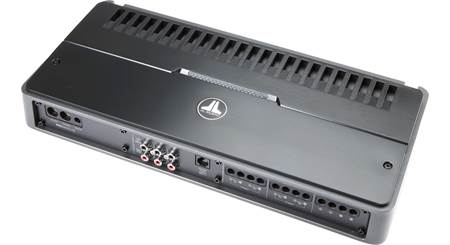
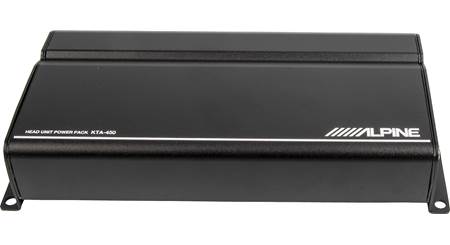
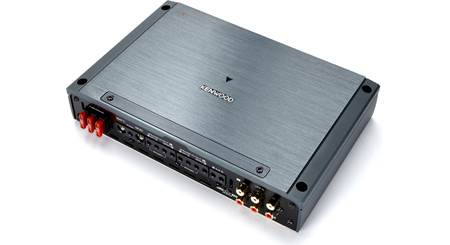
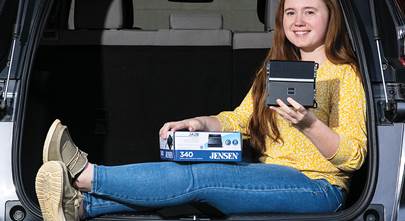

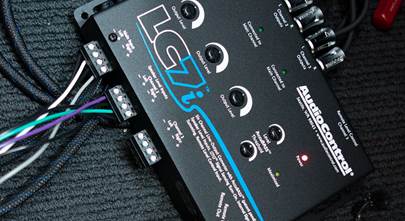

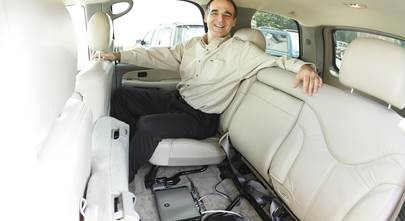

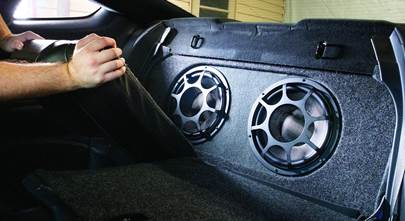
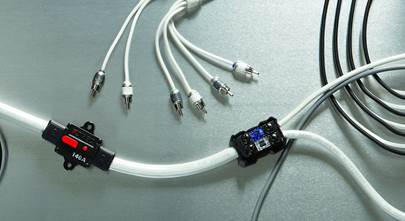

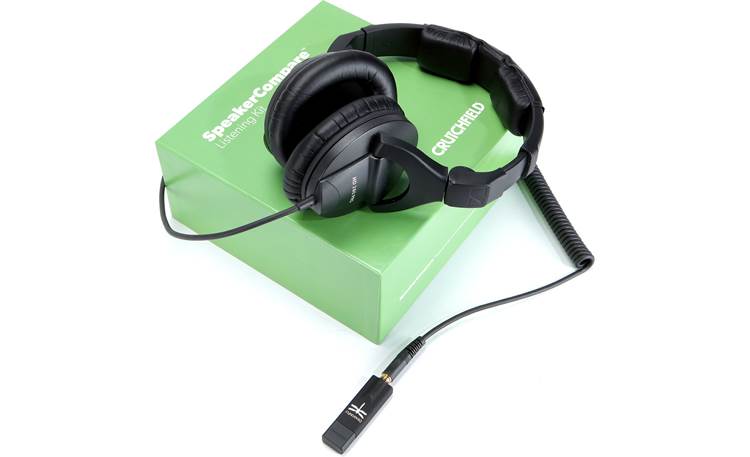
Tylar Bisnett
Posted on 2/23/2024
i am thinking about purchasing a rockford fosgate punch p1-2x10 loaded, vented enclosure, powered by a rockford fosgate r2-500x1 prime 500-watt mono amplifier with a rockford rfk4x 4 awg complete amplifier install kit. all of this will be going in my 2019 bmw 430i gran coupe which has the base factory stereo. i am looking to add more punch and clean, low-end bass to my sound system. do you think these will do the job?
Buck Pomerantz from Crutchfield
on 2/24/2024
Brandon
Posted on 4/15/2023
Does a powered sub get enough air underneath the seat? I was thinking about powered subs but wondered about airflow or lack thereof
Buck Pomerantz from Crutchfield
on 4/18/2023
Matt from Hayti Missouri
Posted on 3/3/2023
Hello Sir, if you would please help me out on my car's three aftermarket amps I plan on installing, I'd be very appreciative of it... I had to install a factory radio DSP to install the amps, aftermarket speakers and subs. One of my amps has 1 pair of preamp outputs(JL Audio AB 2 channel A2150). My DSP only has 6 outputs and I need 8 since I'm running the 2 channel on my tweeters, along with four mids in front doors and rear deck(a pair in front/Pair in back), with a 4 channel amp on them. Then, two subs and a monoblock. My question is, can I run my DSP's outputs to my four channel and two channel amps then use my two channel's preamp outputs to connect my monoblock amp?? Thanks in advance!
Buck Pomerantz from Crutchfield
on 3/3/2023
Ahmed Abualzain from Duhail
Posted on 2/19/2023
I need advice I have Boss BE7ACP-CFT receiver 2 rear Kicker 46CSC6934 2 front Kicker 46CSC54 1 subwo Kicker 44CWCD104 Which amp is the one for my setup? btw my car is BMW E30 1988
Buck Pomerantz from Crutchfield
on 2/20/2023
Matthew from Peregian Springs
Posted on 10/21/2022
Hi, I am fitting Alpine R-S65.2 R-Series 6-1/2" Coaxial (100w rms) speakers in the rear and KICKER CSC54 5.25" 2-WAY COAXIAL SPEAKERS (75w rms) in the front of my original 60 series landcruiser Toyota. It has the factory head unit, which I won't be using or replacing, just leaving in place. I want to use the JL Audio Weatherproof Bluetooth Receiver -MBT-RX with my phone as a head unit, or to supply the music. I like the Kicker KEY200.4 Smart 4-Ch. Amplifier (auto-EQ/processor) 200 Watts Of Power (50x4) Because I can fit it behind the dash and have everything look factory. I'm not sure if this setup will work? Otherwise I'm possibly thinking of the Pioneer GM-D8704 Class FD 4-Channel Bridgeable Amplifier (100W RMS x 4) and putting it under the front seat. Would both these amp configurations work? Thank you.
Buck Pomerantz from Crutchfield
on 10/21/2022
Bill Richards from Salinas
Posted on 9/12/2022
Just purchased JBL Club 605CSQ component speaker system and 4 channel Soundstream reserve RSM4 1220d amp. Using the factory receiver still for a 2017 Ram Pro master van. Question can I use factory speaker lines with AMP ? My plan is to cut factory speaker wire behind receiver and tap speaker output to amps input. then send amp outputs back to stereo harness, and on to the speakers through factory wiring. My crossover. This way i shouldn't need the turn on lead wire since amp has speaker level inputs. hopefully this is correct. one other question is do i need to get 5-watt load resistors to keep factory radio working when speakers disconnected. Thanks, Bill
Buck Pomerantz from Crutchfield
on 9/14/2022
max mcallister
Posted on 7/31/2022
can i run a 2 ohm and a 4 ohm speaker on a 2 Chanel 2 ohm amp?
Buck Pomerantz from Crutchfield
on 8/1/2022
Jeremy Hollier from Carencro
Posted on 2/5/2022
I have a p300-12 fosgate sub/amp combo and was wondering what is the optimal setting for the bass boost and crossover. Some are saying center the bass boost and run at around 80hz on crossover. Any thoughts?
Buck Pomerantz from Crutchfield
on 2/7/2022
jaithish john from kuching
Posted on 12/8/2021
Dear Sir, I have a factory installed radio unit on my old Toyota that has the following specifications: PRODUCT ID: 12891 TOYOTA PART No.: PZ071-00018 F-TEN PRODUCT No: 123001-18100151 [AUDIO AMPLIFIER] Power output: 17.5W per channel into 4 ohms, Max. 40W X 4 I intend to add an amplifier , Blaupunkt VD502 whose specifications are as such : Channels : 2 /1 Max power 4 ohms : 2x100 / 1x300 watts Max Power 2 ohms : 2x200 watts RMS Power 4 ohms : 2x50 / 1x150 watts (THD @ < 0.07 %) RMS Power 2 ohms : 2x80 watts (THD @ < 0.07 %). The alternator output of my vehicle is rated at 12-14.8V , 80A. Will the amplifier addition affect the alternator? Also what will the capasitance value that would be required? Thanks
Buck Pomerantz from Crutchfield
on 12/8/2021
angelx from nicosia
Posted on 7/29/2021
Can u connect 6 coaxial speakers on 4 channel amp and still get the full potential of all 6 speakers like when u do with 4 speakers on 4 channel.?
Buck Pomerantz from Crutchfield
on 7/31/2021